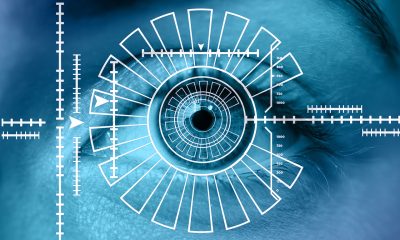Technology
How Cutting Edge Technology Is Giving Us Safer Lives

The unstoppable march of technology into a pillar of our society has unleashed a lot of forces, both positive and negative, and created many problems that are well documented – the impact of social media on mental health, the evolution in the way we process information, and the instant access culture being a few notable examples. A raft of reactionary cultural movements has also been spawned – mindfulness, minimalism and social protest among them. The more negative of these aspects tend to be what gains the most press, as a spiral of sensationalist, click-bait headlines compete for our fractured attention, so the echo chamber about the unsavoury effects of technology amplifies. However, there can be little doubt that a lot of the technological leaps currently being made are of huge benefit for our safety, health and wellbeing, Each month brings breakthroughs and positive developments driven by the power and speed of technological development. Here are just some of the headline advances making the world a safer place:
Robotic CSIs
York University hit the headlines recently for the development of robots that can assist at volatile crime scenes, most especially those that are hazardous to human workers such as those with chemicals or biological weapons. A range of cameras, sensor and gauges provide detailed live data feedback to skilled operators to interpret. They can even construct 3D maps of environments that are hostile to human investigation. The technology will also be of enormous help in disaster relief efforts and may help rescuers to locate casualties with much more accuracy and speed than is currently possible.
There May Be Trouble Ahead
When disaster strikes, it is unexpected by its very nature, a fact which puts relief operations very much on the back foot. But a wave of developments is giving authorities the tools to detect emergencies and disasters before they occur. There are now advances that can accurately predict landslides, as well as technology that can give early warning of forest fires – which are increasing due to global warming and kill over 400,000 globally each year – via reliable, low-cost wireless sensors developed by KUAST in the Middle East which monitor gas emissions and combine a huge range of data on temperature and humidity levels. The more ‘big data’ gathered by these sensors, the more accurately conditions that lead to these disasters can be identified. Emergency response can then be prepared in advance of a disaster happening – and this technology holds developments that could also be applied to the prediction of other, more abstract threats such as crime and illness as well.
Cars That Talk To Each Other
Sentient cars may be a trope that we more usually think of as belonging to comedy movies, but the tech behind getting vehicles to communicate with each other has the potential to save millions of lives each year by preventing road accidents and also taking the sting out of a daily commute by reducing congestion. A vehicle-to-vehicle dialogue exchanging vital data on direction, speed and positioning is fast becoming a reality, due to cutting-edge research in the US. And this prospect isn’t just a faraway dream – Volkswagen has forecast that they will have road-ready ‘talking’ vehicles by next year.
The City That Knows Your Name
Like something out of a sci-fi novel, advanced technologies are being piloted with hopes of making our cities safer too. Singapore may already have one of the lowest crime rates in the world, but that is being further supported by a pilot programme called Safe City being carried out by the government there and technology consultancy Accenture. Video analytics applied to the city’s network of CCTV is being used to identify gang members and wanted criminals, deploying policing resources much more effectively and saving civic cost and disruption in the process. Data generated by movement is used to pick up patterns that alert authorities to a crime being committed. And although some find this use of technology distinctly Orwellian, biometric data such as this is already in use via our chipped passports. This sits alongside the development of a sophisticated audio technology called ShotSpotter that can pinpoint the sounds of gunfire and alert police, giving them a greater chance to catch the suspects in robberies and homicides.
On The Homefront
While many of us may feel ambivalent about our biometric data being used by the state, we may be more sanguine about using it to protect our homes. Existing technology is having a huge impact on home security, with fingerprints and retina scans viable alternatives to mortice locks in giving access to our houses. The Intel Security True Key app can memorise the mathematical proportions of your facial structure and act as enhanced security. Use of an app can now allow you to remotely lock entrances and arm or disable a security system from anywhere in the world, while allowing for house sitters, family members and dog walkers to gain entry. These systems can also remotely monitor and alert you to any unauthorised entry to your home or even your car, meaning that you can stay vigilant and protected at all times.
High Tech Health
As the recent mania for fitness trackers has shown, we’re all keen to use technology to gain insights into our personal health and wellbeing, from scales that analyse our body fat percentage to DNA kits that give custom diet and health advice. A growing number of apps are now focused on our health and wellbeing. ShopWell provides custom dietary advice and helps you build shopping lists and a healthy eating plan, Headspace can proactively manage stress and anxiety, while MySugr helps diabetics to track their glucose levels to support the work of their health professional. Meanwhile, smartphones are also making it easier to access instant medical advice via platforms such as PushDoctor, meaning conditions are more likely to get diagnosed and managed earlier by those with busy lifestyles who never find the time to make it to a doctor’s office. MedAdvisor is a prescription management tool for those on complicated medical regimes. Whatever your health concerns, a raft of tailored support apps are out there – with more being developed all the time.
Technology
How Virtual Fly Elevates the World of Flight Simulators

Flight simulation has soared in popularity in recent years, offering a thrilling and realistic experience for aspiring pilots, seasoned aviators, and anyone with a passion for the skies. At the forefront of this revolution stands Virtual Fly, a company dedicated to pushing the boundaries of flight simulation technology and providing unparalleled experiences for a global clientele.
Virtual Fly goes beyond simply manufacturing flight simulators. They are a comprehensive one-stop shop for everything aviation-related. Their affiliation with Aircatglobal Aeronautical Group allows them to leverage expertise across various sectors, from aircraft and UAV distribution to flight schools and cutting-edge research and development. This holistic approach ensures their flight simulators are informed by real-world knowledge and cutting-edge advancements.
Professional-Grade Precision
Virtual Fly core strength lies in their professional-grade flight simulators. These meticulously crafted machines are not your typical home video game setups. Designed with the needs of professional pilots and training institutions in mind, Virtual Fly’s simulators offer unparalleled realism and accuracy.
Their flagship product, the Solo Pro A, is a shining example. This FAA-approved Flight Training Device boasts an immersive, all-in-one analog cockpit panel. This translates to a realistic flying experience that closely mimics the controls and instruments found in actual aircraft. This level of fidelity is crucial for professional pilots to hone their skills and maintain proficiency, particularly during emergency scenarios or instrument training.
Beyond Professional Training
Virtual Fly’s reach extends far beyond the professional realm. Their flight simulation solutions cater to a diverse range of users, including aspiring pilots, aviation enthusiasts, and even those seeking a unique entertainment experience.
For those with dreams of taking to the skies, Virtual Fly’s simulators offer a safe and realistic environment to learn the fundamentals of flight. Beginners can grasp the complexities of cockpit procedures, understand instrument functionality, and gain valuable experience before ever setting foot in a real aircraft.
Unmatched Quality and Support
Virtual Fly doesn’t just create exceptional flight simulators; they stand behind their products with unwavering commitment. Their dedicated support team ensures a seamless experience, offering assistance with setup, troubleshooting, and any technical challenges that may arise. This level of customer service ensures their clients can focus on what truly matters – experiencing the exhilaration of flight simulation.
A World of Possibilities
Virtual Fly’s commitment to innovation extends beyond hardware. They recognize the importance of a robust software ecosystem to power their simulators. They ensure compatibility with popular flight simulation platforms like MSFS, P3D, and X-Plane, allowing users to explore a vast array of virtual landscapes and aircraft types. This flexibility caters to individual preferences and training needs.
The Future of Flight
Virtual Fly is a company on the rise, constantly pushing the boundaries of what’s possible in flight simulation technology. They are a driving force in the industry, dedicated to creating realistic, accessible, and educational experiences for a global audience. Whether you’re a seasoned pilot, an aspiring aviator, or simply someone with a passion for flight, Virtual Fly offers a gateway to the skies, allowing you to experience the thrill of flight simulation firsthand.
Health
The technological advances in physical and occupational physiotherapy that you should know about

Technology has reached all areas of human life to help us carry out various tasks and to make everyone’s lives easier in different ways. These advances are also in medicine and in the different therapeutic treatments that are used to improve various ailments. Learn what the most advanced methods are and how you can use them.
Health is the most precious thing for every person; extreme care must be taken to ensure the correct functioning of the body. There are many ways and procedures aimed at treating various conditions and helping to stay healthy, which have been significantly enhanced thanks to advances in technology.
The area of physiotherapy is one of those that has taken the best advantage of technological advances, and it has raised the quality and effectiveness of its therapies and procedures to levels never before experienced. Thanks to them, physical and occupational physiotherapy has improved substantially and is increasingly valued for the treatment of various health cases.
Physiotherapy programs for physical rehabilitation
Currently, there are various physical therapy software programs that help patients recover and improve their physical functionality quite efficiently. There is advanced software, with a wide range of physical exercises based on virtual reality, which are designed to promote the progressive and effective recovery of those who find themselves in the need to use them.
Digital physical rehabilitation software includes analytical and functional exercises, which can be used in the rehabilitation of neurological patients, in the recovery of musculoskeletal injuries, in the prevention of falls, in programs against premature ageing and even with children that suffer these types of ailments.
Advantages of using software in physiotherapy
Physiotherapy computer programs are health products, specially designed by professionals, specifically for clinical use. They offer many advantages, among which the following stand out:
- Enjoy the therapy sessions: the gamification that can be achieved with new technologies applied to physiotherapy turns the sessions into truly fun moments, which increases the patient’s motivation and their active participation in performing the corresponding exercises.
- Rehabilitation quantification: all kinematic parameters, such as joint ranges, measurement of the base of support, centre of gravity, number, and characteristics of steps, among others, can be consulted in detail at any time during the therapy. Additionally, they can generate detailed clinical reports on each patient, which can be printed or exported in PDF format.
- Remote sessions: technological advances have reached such high levels that they now open the possibility of applying remote sessions to the patient, thanks to the corresponding home exercise program software for physical therapy designed for this purpose. In this way, treatment can be reinforced with home sessions, which are also monitored and allow remote management, even from the centre itself. This has greatly benefited patients that have mobility problems.
Physical therapy home exercise programs are digital tools that help therapists and patients develop personalised exercise plans from the comfort of their homes. They provide a wide variety of benefits and features that improve rehabilitation and accelerate recovery.
Physiotherapists can decide with which patients and how to develop the digital physical rehabilitation exercises available to them, which can be personalised and adapted according to the needs of each patient.
Occupational therapy software programs
The occupational therapy software programs offer a multitude of resources and tools for therapists and patients, including simulations of everyday tasks, virtual activities to improve fine motor skills, time management strategies, and hand-eye coordination exercises, among others.
One of the main resources used is related to immersive virtual rehabilitation, which allows training various functions of the hand and different movements of the upper extremities that workers perform in their corresponding tasks. To do this, virtual reality and specialised programs are used that simulate environments similar to those they face on a daily basis in their jobs.
These occupational therapy software programs also include patient progress monitoring and assessment tools. They are digital solutions that improve the efficiency of occupational therapy by providing interactive virtual environments and resources tailored to the individual needs of each patient.
Personalization of rehabilitation programs
An important advantage offered by technological advances in this area is the possibility of having personalized rehabilitation programs, which therapists can use to adapt treatments to each patient’s purposes and abilities.
The personalization of rehabilitation programs substantially improves the effectiveness of treatments by addressing the unique needs of each patient. Additionally, this rehabilitation software provides useful resources to monitor and adjust as patients progress in their recovery.
This capacity for adaptation and personalization favours a firmer rehabilitation and speeds up the return to normal functionality of the treated people.
It is a feature that offers various benefits, such as the possibility of applying more individualised approaches, which guarantees that the exercises are safe, effective, and appropriate to promote recovery, and the optimization of results, as they are exercises designed specifically to meet each patient’s needs. .
They also generate greater motivation and adherence, by considering the interests, preferences, and goals of each individual treated, and help prevent additional injuries, since the exercises are adapted to the individual capabilities and limitations of each person.
In conclusion, physical and occupational therapy software has transformed the way rehabilitation is performed on people today. They are digital tools with a wide variety of features that improve the efficiency and personalization of treatments, tailoring the perfect exercise routine for each patient’s needs.
They cover various areas, from home exercise programs to creating personalized exercise plans, facilitating faster and more effective recovery for patients. But, these advances do not stop and aim to continue towards levels that cannot even be imagined, so we can count on an even more promising future in this important area of health.
Do not think about it anymore, if you are suffering from any ailment that could benefit from remote therapy, or know of someone that does, check this software today and see how your life can easily improve thanks to the help of the experts behind them. Your health will thank you.
Technology
What are spamtraps and how to get them off your mailing list for good?

There is a silent enemy that many companies face and that focuses directly on the contact list. It is spamtraps. These are emails that are meant to catch spammers, but negatively influence mass mailings. Today we are going to find out why, and we are going to assess some actions that are easy to do to get them out of the way.
Mailing lists are generally formed by people who are interested in using a product or service of a company and who subscribe voluntarily. However, it can happen that an email appears normal-looking, but it is a spammer detector. When an email is sent to these addresses, they block it, causing a negative impact on the reputation of the brand that sent it.
Spamtraps are traps for emails, in short. They do not belong to any real person, and their only function is to block the sender of the email and mark him or her as a spammer. In this way, the brand is affected, even if the content sent has nothing to do with spam. These exist on all existing email platforms, such as Gmail or Yahoo.
Characteristics of spam traps
Although there is no simple way to find out which of the emails on your list are spamtraps, you can assess some characteristics that lead to the most frequent spamtraps. Here we can see elements such as:
- No direct relation to a person: people generally put their names when creating their emails. Although this does not happen in 100% of cases, it could be an important factor to consider if you see some emails made up of meaningless letters and numbers, for example.
- Emails with generic names: Generic names are not a good sign, even though many companies use them as a means of communication. To separate those that are real from those that are not, it is possible to check the domain of which the emails are part. For example, there may be emails in a list that start with the word sales@XXXXXX. What completes the part of the X’s will tell us what the chances are that it is a spamtrap. In any case, be aware that it is very unlikely that a company will subscribe to a newsletter using this type of email.
- Abandoned emails: Technology has come a long way in recent times, and this has led to the use of new ways of communicating. Nowadays, it is very unlikely that there are people who subscribe to a list with a Hotmail email address. It is therefore essential to check, if you have one, that it is not an abandoned email that can be used with ISPs because they are no longer in use.
- Misspelled emails: This is a very common situation that occurs, especially when double confirmation is not used. In this case, it is possible that a person enters the mailing list with a misspelled entry and then the result is an email that ends, for example, in @gml.com. You have to be very careful with these. The recommendation is to always run the confirmation to ensure that it is a real and operational address.
Actions to take to verify spamtraps on the mailing list
Now that we have an idea of what we can look for in the list and target what looks the most suspicious, we can define a series of actions to take in order to detect whether the list is clean or whether there are any harmful elements present.
The first thing to do is to review your entire contact list. This can be a tedious task when you have a large number of subscribers, but it is worth the effort. If in this first step you got several suspicious emails, you should flag them to check their behaviour in the following points.
Then, it will be time to evaluate the results of the email marketing campaigns sent previously. In these campaigns, you will get a history of very interesting data that will tell you how many people generally open the emails, those who do not, etc. The important thing here is to assess whether the values shown in the history are more or less constant or have suffered a significant decrease in recent days. If this is the case, it could be due to spamtraps.
It is common for these problems to become apparent when a number of new users join the list. It is possible that among them there is an email that works as a spam trap. The simplest solution to recognize if this is the problem is to perform a segmentation and send an email to the members of this new list and verify the results.
Finally, you will need to check if the domain you are using is on the block list. This is an essential step to know if you really have a problem or not. Doing this on a regular basis is key to avoiding problems.
Segmentation as a working strategy
Working with email marketing software that allows the segmentation of the mailing list is a benefit that will remove problems later and, of course, spamtrap detection is one of them. Thanks to segmentation, it will be possible to create groups of users to whom certain campaigns are sent and evaluate the response they have.
Mailrelay is the best option in this regard because it offers the possibility to segment and also to validate the statistics. With the statistics you can measure the percentage of clicks that were made and that can give us an important guide, since this is an action that can only be performed by real people.
Nowadays, there are already robots capable of opening emails that arrive at your server, so the open rate is no longer a valuable statistic in this regard.
After you are clear about which contact segments are performing well, you can continue to work with them as normal and separate those that are not performing well to validate them later. It is better to keep fewer subscribers than to risk having your domain blocked and losing your entire list.
-

 Business10 months ago
Business10 months agoHow To Future-Proof Your Business With The Right Tools
-

 Travel8 months ago
Travel8 months agoTravelling from San Antonio to Guadalajara
-

 Business11 months ago
Business11 months agoWhat are EDC products, and why should you always have them?
-

 Travel5 months ago
Travel5 months agoTravel wellness tips for a healthier and more enjoyable journey
-

 Europe3 months ago
Europe3 months agoRecent Books by Boaventura de Sousa Santos: Law, Colonialism, and the Future of Europe













